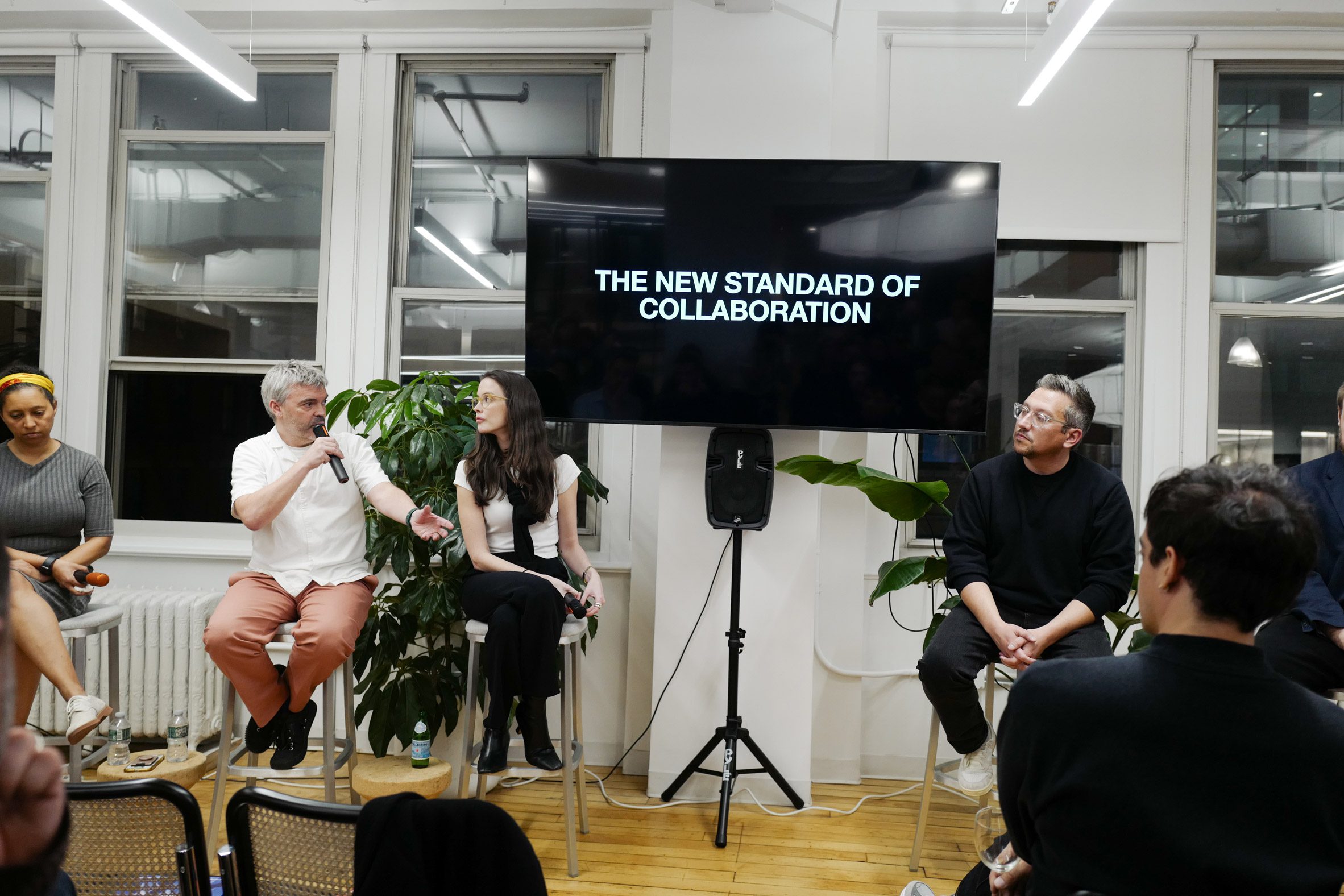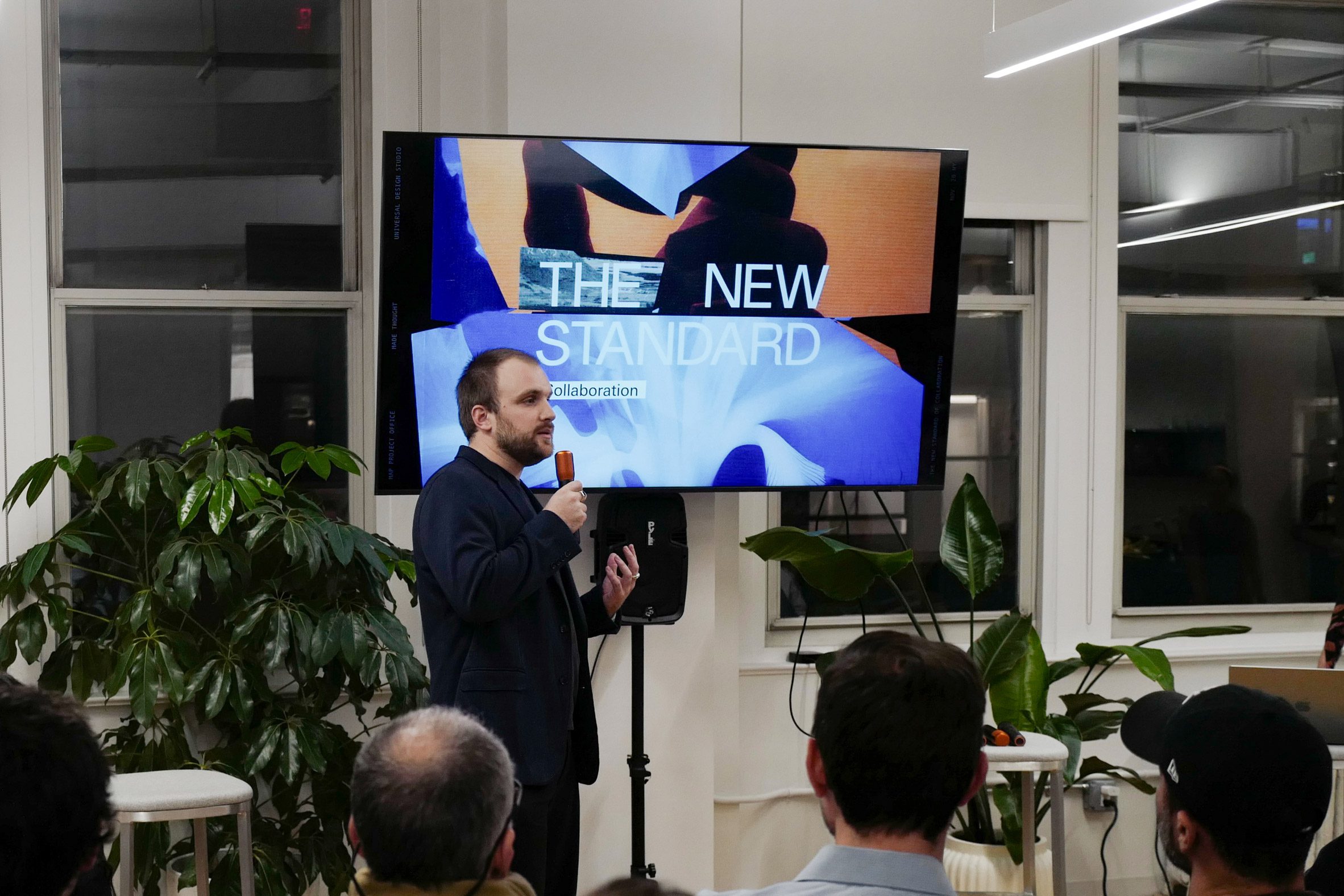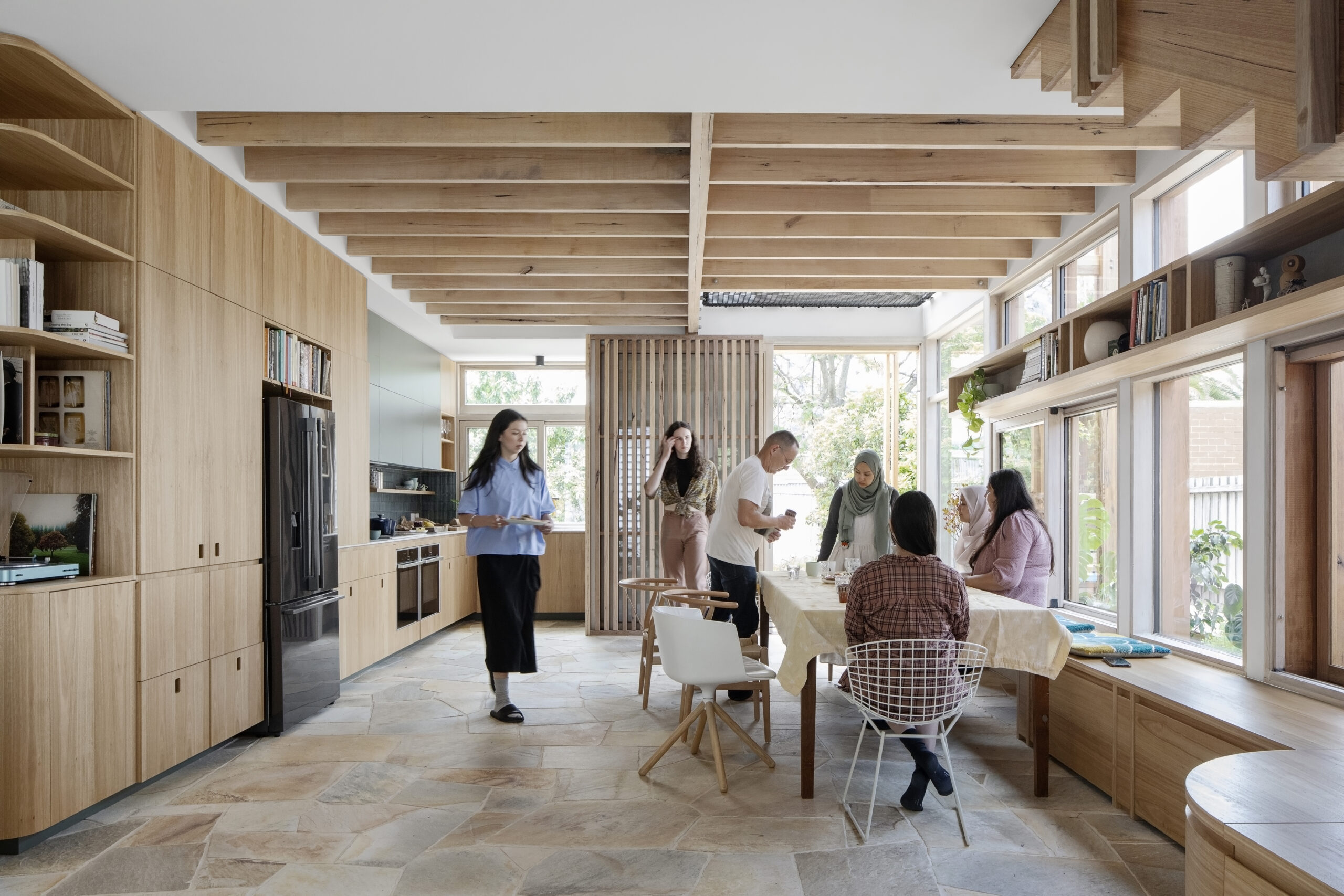"Friction is at the heart of creativity" says panel at The New Standard talk
Promotion: brands and studios must be willing to embrace difference and tension while creating space for dialogues, said panelists at a talk about collaboration hosted by Dezeen in New York. The talk took place at the offices of The New Standard in SoHo, a design collective founded in London, UK that includes Universal Design Studio, The post "Friction is at the heart of creativity" says panel at The New Standard talk appeared first on Dezeen.


Promotion: brands and studios must be willing to embrace difference and tension while creating space for dialogues, said panelists at a talk about collaboration hosted by Dezeen in New York.
The talk took place at the offices of The New Standard in SoHo, a design collective founded in London, UK that includes Universal Design Studio, Made Thought, and Map Project Office.
The panelists voiced their concerns around the risks of designers talking in echo chambers and avoiding conversations with disagreements.
It was the second in a series of talks put on as part of a collaboration between Dezeen and The New Standard, the first of which took place at the Ace Hotel in Brooklyn during NYCxDesign in May.

Moderated by Dezeen's US editor Ben Dreith, the panel included Universal Design Studio principal Jason Holley and Made Thought strategy director Michaela Crompton.
They were joined by New Balance global marketing director Chuck Mauro and Brooklyn Museum contemporary art curator Kimberli Gant to discuss the need for a new era of collaboration in the design and art worlds.
According to the panellists, creating space for an honest exchange of ideas and expression is essential to the success of companies in an era of complex problem-solving and the proliferation of brand partnerships.
"I don't think creativity can happen in a vacuum," said Crompton.

"I think I have good ideas, but great ideas come from conversation and dialogue and interconnectivity between different disciplines and different teams, and I think being together under one group is a really important component there."
Crompton added that creating spaces for vulnerability and honest exchange within and between companies is essential to fostering these dialogues.
Holley agreed, adding that a certain degree of tension and friction underlying different viewpoints and approaches should be prized in order to create good work.

"Engaging with others who have different perspectives, different opinions can be uncomfortable," he said. "That friction, for me, is at the heart of creativity."
He went on to say that finding common ground and languages should always be the first step when embarking on any collaborative venture. He cited an example where his studio worked on a project with tech firm IBM, where the parties had to use visual metaphors to understand each other's disciplines.
Mauro, who has partnered New Balance with a number of distinct brands for collaborative ventures, also said that making space for different perspectives is important, but emphasised the need to "let go" of control and take risks.

"There are some brands that don't take any risks at all, and then they either fail or become part of a meme," said Mauro.
"Risk is really everything," he continued, adding that brands should make sure at least some values align. "Letting go is a necessary part of collaboration."
Crompton added to Mauro's point, reiterating the need for vulnerability. "True collaboration is a vulnerable act," she said "It requires you to throw down your ego, throw down any sort of posturing."

Gant stressed that company culture is important and that certain parameters need to be set in order to create space for dialogue between staff and collaborators.
"When you're going working with a lot of people, you don't always get the time to actually listen to them and take the feedback and make things better," she said. "Unless you're in a culture, in a situation, that allows for that."
Gant spoke about her work on an exhibition showcasing the archive of film director Spike Lee, saying that "listening" to the needs of all actors involved in a large project was an essential aspect.

She also cautioned against top-down collaboration, emphasising the need for dialogue amongst people at all levels of a project.
Latching onto the point about complex systems, Holley noted that the architectural fields tended away from embracing the "messiness" that is inherent to multi-party projects.
"Architecture as a discipline has, unfortunately, retreated from an engagement with the messiness of the world, the messiness of people."

Crompton reiterated a need for messiness and informality in open collaborations.
"There's something to be said embracing the messiness," she said.
"Embracing informality doesn't always have to be a creative review, which sounds intimidating. It can be a kick around for a chat, a conversation, sharing ideas and listening to each other."
"Increased the messiness a little, throw stuff at the wall and see what you get."
The New Standard is a creative collective comprising renowned design studios Universal Design Studio, Map Project Office and Made Thought.
The photography is by Louis Kassam
Partnership content
This article was written by Dezeen for The New Standard as part of a partnership. Find out more about Dezeen partnership content here.
The post "Friction is at the heart of creativity" says panel at The New Standard talk appeared first on Dezeen.
What's Your Reaction?


















































